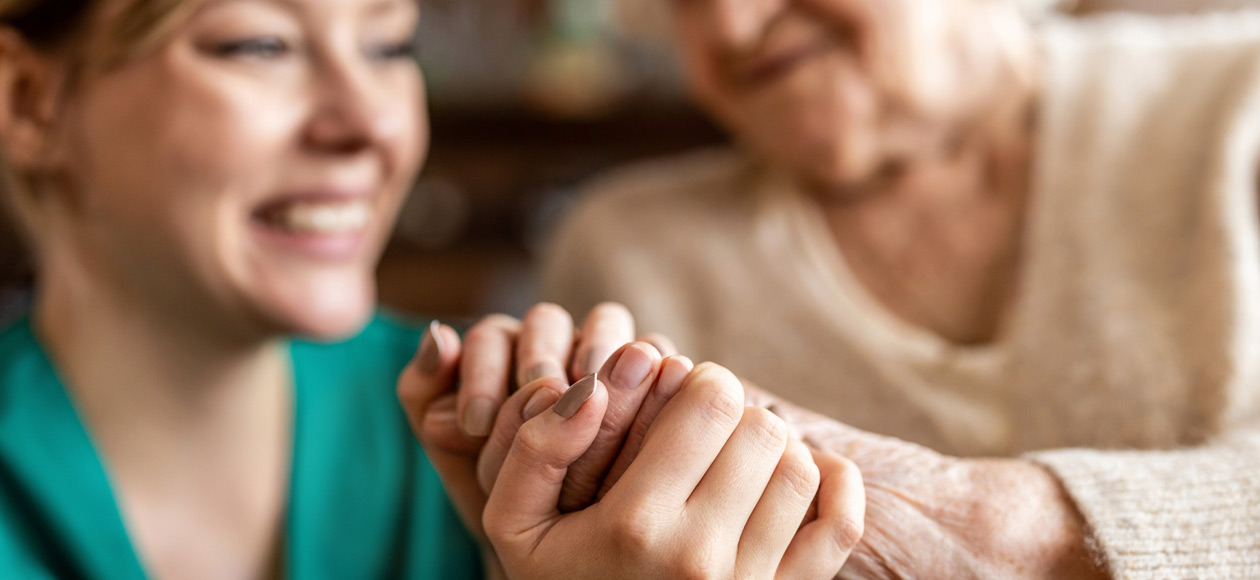

Hospice patients nearing the end of their life benefit from routine nursing care in their home. These services are designed to provide direct care and support.
Hospice Nursing Care For Patients
Hospice nurses do far more than provide physical care for patients. They are a calm and dependable presence in the lives of their patients, offering expert care and unwavering compassion to support patients throughout their end-of-life journey.
Direct Care: Hospice nurses handle the following needs of patients:
- Wound care management
- Medication management
- Symptom management

Emotional and Spiritual Support: Hospice patients depend on nurses to deliver critical care. As a result, they grow to trust the nurse with personal memories, fears, and desires that they might not share with their closest family members. For example, if a patient shares their fears about death, the nurse may communicate with the hospice chaplain to ensure the patient’s fears are addressed. In these moments, nurses are able to provide critical emotional and spiritual support.
If patients don’t have close family or friends, the end-of-life journey can be very lonely. Hospice nurses demonstrate love in compassion, helping patients feel a sense of social connection and belonging.
As patients near death, hospice nurses accompany the chaplain to provide a reassuring presence and relieve any pain and discomfort, as possible.
Collaborate With Care Team: Hospice nurses also collaborate with the patient’s hospice team to ensure the highest quality of care is provided. Hospice nurses track and document changes in the patient’s symptoms and share their recommendations for improving care with the care team.
These interdisciplinary meetings are held regularly and are designed to ensure the patient receives the highest quality of care possible. During the meetings, each member of the patient’s care team shares information about the patient’s progress, recommends changes to the care plan, and ensures treatment is in line with the patient’s end-of-life care wishes.
Nursing Care For Hospice Patient Family Members
Hospice nurses also support the patient’s caregivers and family members by providing education, respite care, and emotional support.
Education: Hospice nurses help educate family caregivers about ways to care for their loved ones. For example, hospice nurses may teach caregivers how to administer medication and assist their loved one with daily living activities. As the patient’s illness progresses, hospice nurses help family caregivers adjust their care to the needs of the patient.
Respite Care: Caregiving is a very time consuming responsibility that could also be emotionally, mentally, and spiritually draining. As the hospice patient’s needs increase, caregivers may experience burnout and require outside support.
Respite care is a valuable resource for caregivers who need some time off to rest, relax, or take care of personal needs.
Emotional Support: At times, caregivers may feel isolated and alone. Constantly looking after the needs of their loved one can be a difficult burden. In these cases, routine visits from a hospice nurse can offer the support caregivers need to continue caring for their loved one.

The Role of Home Health Aides
A hospice home health aide (HHA) provides another level of care to patients. An HHA is a specifically trained member of the nursing team who typically has compassion, patience, and a high level of attention to detail. Their role is to monitor the patient’s condition and assist with some daily living activities, working under the direction of the nurse.
In addition to assisting with daily living activities that the patient can no longer handle on their own, a home health aide can also:
- Monitor the patient’s physical and mental condition for any changes
- Assist the patient in moving, such as from the bedroom to the bathroom
- Take vital signs like respiration, pulse, and blood pressure
- Administer some medications
- Operate some medical equipment, such as a ventilator
- Take action in an emergency, such as a stroke, heart attack, or accident
